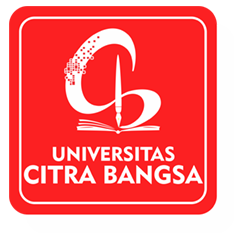Analysis of Learning Outcomes Using the Audio Visual Assisted Demonstration Method in Class III E SDK Citra Bangsa students
Keywords:
use sparkol videoscribe mediaAbstract
The research method is descriptive qualitative. This study consisted of two stages, namely interviews and questionnaires. This research was conducted at Citra Bangsa Christian Elementary School. The subjects in this study were students of class III E with a total of 22 students consisting of 9 male students and 13 female students. The test results were carried out with a demonstration method that is questionnaire distribution to students. In this study based on the questionnaire answers given to students obtained the results of the questionnaire calculation there are 4 categories namely: Strongly Agree (SS), Agree (S), Disagree (TS) and Strongly disagree (STS). Of the 22 respondents who answered each item by achieving a score of strongly agree 98 (44.00%), agreed the total score was 67 (30.45%), disagreed with a score of 24 (10.90%) and strongly disagreed the score 11 (2 , 42%) respondents. Thus it can be concluded that audio visual learning media is appropriate to be used as a medium in the learning process
Downloads
Downloads
Published
How to Cite
Issue
Section
License
Every works in JUMPIKA is licensed under a Creative Commons Attribution-ShareAlike 4.0 International License.
Authors who publish with this journal agree to the following terms:
- Authors retain copyright and grant the journal right of first publication with the work simultaneously licensed under a Creative Commons Attribution License that allows others to share the work with an acknowledgment of the work's authorship and initial publication in this journal.
- Authors are able to enter into separate, additional contractual arrangements for the non-exclusive distribution of the journal's published version of the work (e.g., post it to an institutional repository or publish it in a book), with an acknowledgment of its initial publication in this journal.
- Authors are permitted and encouraged to post their work online (e.g., in institutional repositories or on their website) prior to and during the submission process, as it can lead to productive exchanges, as well as earlier and greater citation of published work (See The Effect of Open Access).




